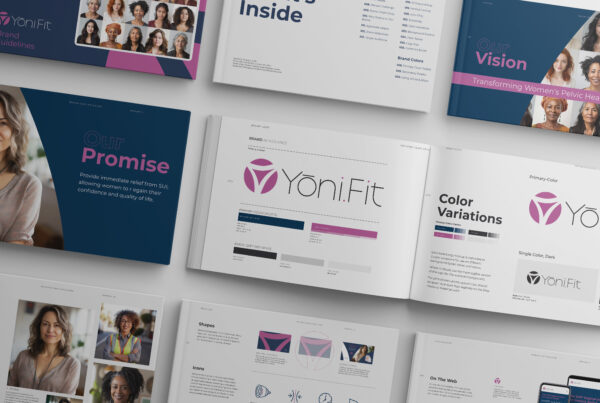Have you ever come across a brand where the logo, website, social media profiles, and marketing materials all look like they were created by different designer? No consistency, no cohesion. As a consumer, it leaves you confused about what the brand really stands for. The key to a strong brand identity is design consistency. When all the visual touchpoints of your brand work together harmoniously, it creates a powerful impression in the minds of your audience. In this article, we’ll show you how to develop and implement a consistent design style across your brand. From choosing complementary color palettes to establishing brand guidelines, we’ll cover the essential steps to crafting a unified brand identity that makes you instantly recognizable. By the end, you’ll be well on your way to becoming an iconic brand.
How to Create Visual Consistency Across Brand Touchpoints
To create visual consistency across all your brand touchpoints, follow these key steps:
Establish Clear Brand Guidelines
Develop a comprehensive brand style guide that outlines your brand’s visual identity. Specify your brand’s colors, fonts, logos, images, and other key design elements. Distribute this guide to anyone creating content for your brand.
Use Consistent Colors and Fonts
Choose two to three primary brand colors that you use consistently on your website, social media profiles, print materials, product packaging, and anywhere else. Select easy to read fonts for headers and body copy that match your brand’s personality. Use the same color and font combinations everywhere.
Maintain a Consistent Layout
Establish a consistent layout framework for your digital and print content. Use similar navigation, image placement, and information architecture across your website, blog, social media, emails, ads, brochures, and other collateral. Keep important elements like your logo, navigation, and calls-to-action in the same place.
Use Cohesive Imagery and Messaging
Select images, icons, and graphics that visually represent your brand and use them widely. Develop clear brand messaging and a consistent brand story or voice that comes through in all content. Use similar phrasing, language, and terms whenever you describe your brand, products, services, and values.
Audit and Update Regularly
Conduct regular audits of your digital and print materials to check for any inconsistencies. Make updates as needed to align all brand touchpoints. As trends change, you may need to make minor changes to your style guide. But avoid frequent or major overhauls, which can confuse your audience.
Maintaining visual consistency across your brand is key to building recognition and trust. Follow these best practices for cohesive design and messaging to present a unified brand identity to the world.
Maintaining a Unified Brand Identity Over Time Through Design Standards
Maintaining consistency in your brand’s visual design over time is key to building recognition and loyalty. As your company grows, it can be tempting to frequently update your logo, fonts, color palette, and other design elements. However, making too many changes risks confusing your audience and diluting your brand identity.
Establish a set of brand design standards to keep your visual style cohesive and easily recognizable. These standards should specify your:
- Logo – Only update periodically, if at all. Your logo is the cornerstone of your brand identity.
- Color palette – Choose 2-4 primary brand colors and specify proper usage for each. Only introduce new colors gradually and for specific purposes.
- Typography – Select 1-2 complementary fonts for headings and body text. Limit variations to different weights (light, regular, bold) and sizes.
- Imagery – Curate a collection of stock photos, graphics, icons, etc. that reinforce your brand personality and values. Provide guidelines for image selection, editing, and placement.
- Layouts – Create templates for your website, social media, print materials, presentations, signage, and more. Templates ensure a consistent structure, look and feel across all brand touchpoints.
- Voice and tone – Establish a brand voice through key messages, a mission statement, and writing guidelines. Your voice should remain consistent even as you update visuals.
Revisit your standards annually to make minor refinements, but avoid overhauling them. Educate all teams who interact with your brand—marketing, sales, customer service, PR, etc.—on the standards to maintain compliance. By staying true to a unified brand identity over time through consistent design, you build familiarity and shape how people perceive and connect with your company.
Conclusion
You’ve put in the work to establish a strong visual brand for your company. Now it’s time to make sure every touchpoint reinforces that identity. Implement those style guides, redesign anything that’s off-brand, and be disciplined in applying your new design standards going forward. Staying consistent may require effort and commitment, but the rewards of a unified brand image that resonates with your audience are well worth it. Your brand depends on it. Keep at it and soon that consistent, professional brand you envisioned will become second nature. Before you know it, you’ll have achieved design consistency and built an iconic brand identity. Well done, you!




